First, mea culpa!
I promised to announce the winner of a free copy the The Achilles Effect: What Pop Culture is Teaching Young Boys About Masculinity last Friday, and I didn’t. I was so excited to share my Best of the Blogs list that I completely forgot to check my blog calendar, which would have, of course, reminded me to draw and announce the winner.
But it’s not too late. The winner of The Achilles Effect is…
Cathlene Bell!
Congrats, Cathlene. Given the fact that you’re passionate about media literacy and that you’re expecting your first child, I think you’ll enjoy it very much. Hopefully you’re copy will arrive soon, and you’re chime in with some questions and comments.
I’m about two chapters into the book, and I have to tell you, I have conflicting thoughts. On the one hand, I can absolutely see how media images influence and reinforce our sons’ ideas of masculinity. Smith carefully analyzes a lot of familiar characters, and looks at the unspoken messages our sons may be getting from Power Rogers and Anakin Skywalker. Male characters, she writes, typically embrace the warrior stereotype of masculinity: they’re powerful, they have a temper, and they don’t hesitate to use force if necessary.
Male characters who don’t fit the warrior archetype generally fall into either the “nerd” or “bully” category. Consider Geronimo Stilton, a popular children’s book character who embodies many positive characteristics:
Stilton, Smith writes, is the bookish and sensitive male editor of a big-city newspaper. Geronimo has many good qualities, like loyalty, intelligence, and compassion, but he is clearly positioned as a weakling. The adventures he chooses are rarely of his own choosing. He is often pushed or cajoled into his various expeditions, is scared of his own shadow, and very clumsy. He is frequently reduced to tears and his constant crying is depicted as ridiculous, not as a legitimate emotional response.
I get it: Geronimo may be subtly teaching our boys that it’s not OK to cry. But couldn’t his awkwardness just be a way for awkward-feeling boys to relate? Might it not be a bit like Scooby Doo? As a kid, I hated the cartoon; it was too scary for me. But as as adult, I see that part of its appeal to kids is that Scooby and Shaggy are afraid of everything, and that they ultimately learn there was nothing to fear.
(For the record, The Achilles Effect talks about Scooby Doo too. Fred, she says, is portrayed as the man’s man. Shaggy is clearly the weakling.)
I have mixed feelings about the book’s discussion of TV shows as well. I agree that much of what passes as male conversation in kids’ TV shows is probably harmful for our sons:
By implying that insults and the language of aggression and typical and even expected in male-to-male interactions, the creators of these mildly bullying characters [such as Harry from Horrible Harry and Buford from Phineas and Ferb] are, however, subtly, indicating that competition and jockeying for position are essential elements of male relationships.
But isn’t jockeying for position exactly what happens almost any time you get a group of males (of any age) together? And that’s my main issue with the book: How much of what we see in the media is essentially just a reflection of what we see in the real world? In chapter two, for instance, Smith writes about the fact that mothers show up far more often in children’s books than fathers do, and that it’s almost always mothers who are shown doing the child-rearing, particularly in books about young children. Sexist as that may sound, isn’t that still the reality in most families? The archetype of the distant,work-focused emotionally withdrawn father is still a reality in many homes.
Which brings up some questions:
- Should media actively work to create different male archetypes, in hopes of changing behavior?
- Should parents restrict children’s media consumption to media that presents a more balanced and egalitarian viewpoint?
- If they do, does it help or hinder their child as the child negotiates the real world, which still includes a fair amount of sexism and gender imbalance?
- What matters more? What a child sees or reads in a book or on TV (or in a video game or movie), or what a child sees at home?
- Can boys who are steeped in mainstream media become well-rounded, emotionally intact men?
I think — or at least hope! — that the answer to the last question is Yes. The rest, I’m not so sure about. I’m definitely looking forward to talking with the author later this month!
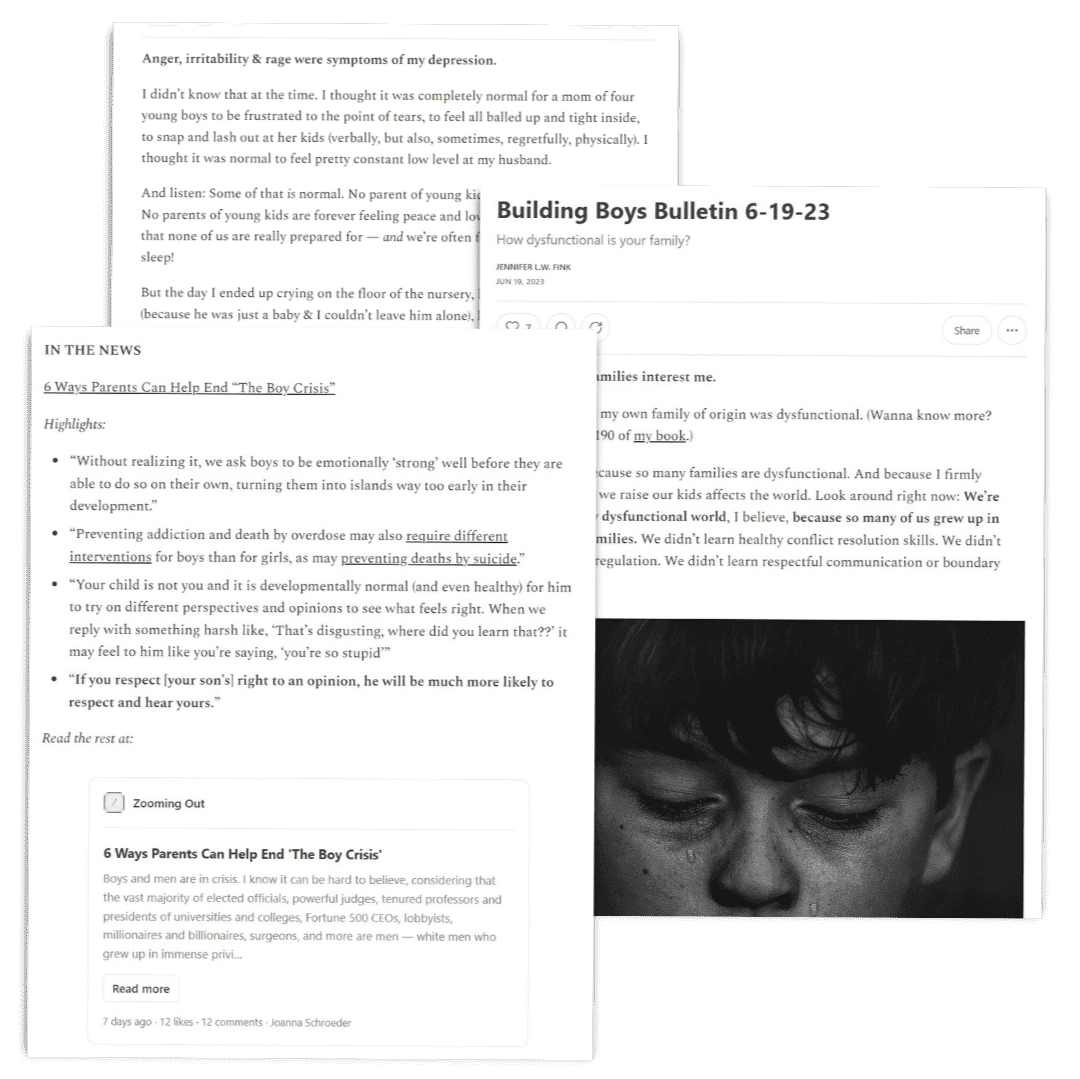


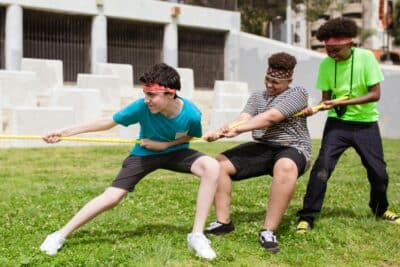
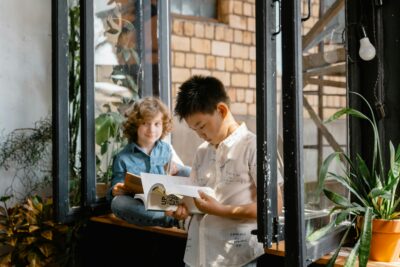
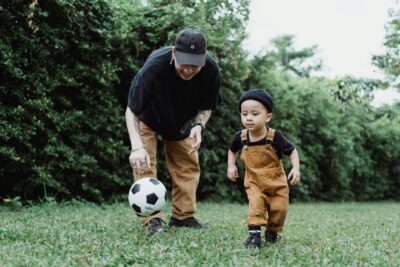
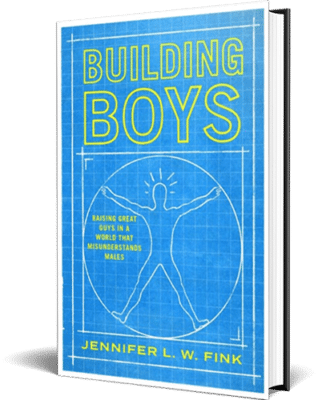
6 Responses
Have you ever watched the TV Show Chuck? It ran for 5 seasons on NBC and finished its run earlier this year. I always loved the show, in particular because of its varied characters (who grow a great deal during the show).
Anyway, I’d be really interested to know your thoughts.
I have not seen Chuck, though I’ve heard good things about it. I love the idea of varied characters who actually grow and change,though.
I’d love to hear your thoughts on the show!
I think that we have to talk about what kids see–good or bad–and point out the stereotypes so that they can be thinking viewers. Because we can’t control all media, or can’t for very long.
This is interesting–my brain is abuzz. Thanks.
I think you are right on the money, eliana!
Are you trying to suggest that perhaps this book is pointless? That’s the impression I get from some of your comments. Yes, of course it is a reflection of what we see. That is the point! What we see more often than not includes some really inappropriate things, and reflecting on those things and thinking about how we can endeavor to reshape what is presented and/or teaching our children how to manage their interpretations are really important tasks! But in order for any of this to happen, we need awareness and critical thought. Which is what this book supports.
I did not mean to imply that the book is pointless. I enjoyed the book and found it to be quite thought-provoking.